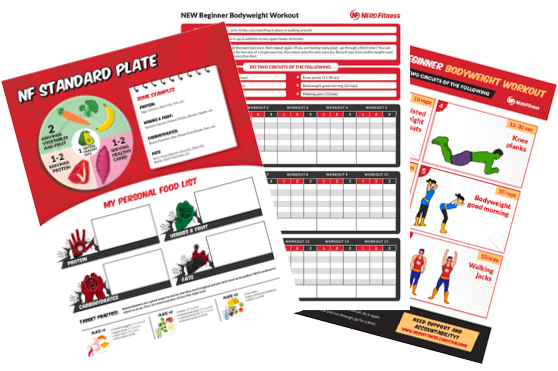
Bacon.
Love it or LOVE it, we consume it in mass quantities, obsess over it, and add it as flavoring on almost every food imaginable.
That’s because it tastes good on just about anything.
However, there’s more to bacon than meets the eye (like Transformers, but with pigs), and we get a lot of questions:
- Is bacon healthy for me?
- Are there different qualities of bacon?
- Where do I get the good bacon?
- Can I eat TOO much bacon?
- Is turkey bacon healthier?
Luckily, you’re dealing with a nerd that happens to love bacon as much as I love doing the nitty gritty research to provide you with everything you need to know about bacon.
I guarantee you’ll learn a thing or two today about this versatile food, with as many pig puns thrown in as possible.
What is bacon?
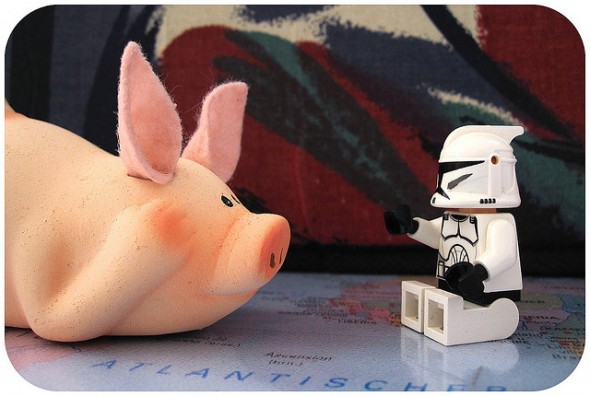
Bacon comes from a pig.
Hopefully you already knew that. But you may not have known that bacon has been around since 1500 BC! It’s no wonder why this food is so delicious…it’s had a long time to be perfected.
Bacon tends to come from a particular part of a pig, as different types of meat can be gleaned from different parts of the pig: ham, pork, bacon, and so on.
That’s right Homer, a pig is a magical animal!
Bacon is generally prepared from the belly of a pig (AKA pork belly), though outside of the US it might be more common to use loin (Canada) or shoulder cuts (Europe). Once the pork is cut from the pig, it’s “cured” (a way of preparing meat) using a boatload of salt and sugar and either dry-packed or brined (with salt and sugar); oftentimes nitrates are used as well (which we’ll get to in a minute). At this point, the meat can be dried for weeks or months, smoked (i.e. hung up and exposed to smoke from wood burning), or boiled.
The salting of meat is how food stayed edible way back in the day, before Doc Brown invented the refrigerator.
If it’s only been smoked or dried (instead of boiled), it’s the type of bacon you cook before eating.
What about turkey bacon? Veggie bacon?
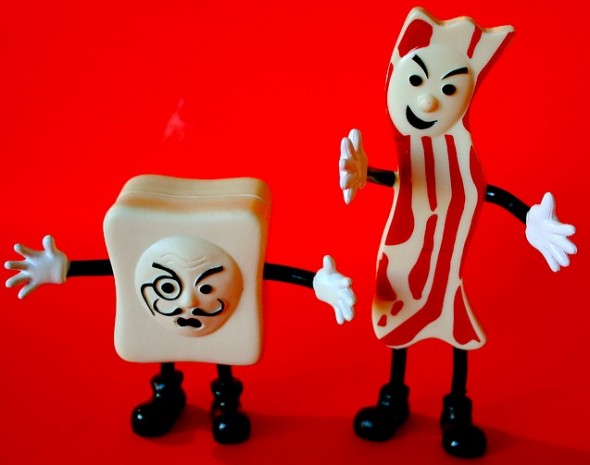
Unless it came from a pig, it ain’t bacon.
I know most non-pig bacons will try to convince you that it’s a healthier alternative, but is that true? Let’s take a look at the most common bacon impostor: Turkey bacon! It turns out that turkey bacon is neither bacon nor turkey! A quick look at the ingredients on a package of “healthy” turkey bacon reveals these ingredients:
“TURKEY, WATER, SALT, SUGAR, SODIUM LACTATE, CANOLA OIL, SODIUM DIACETATE, SODIUM PHOSPHATES, SMOKE FLAVOR, SODIUM ASCORBATE, AUTOLYZED YEAST EXTRACT, SODIUM NITRITE, DEXTROSE, SOY LECITHIN.”
When they say “turkey,” they’re essentially referring to the modified turkey bits they’ve combined to force into a bacon shape. Somebody needs to tell the turkey, “Man, just be yourself.”
Soy bacon, veggie bacon, fake bacon, and any other type of bacon-substitute you stumble across are guilty of being HEAVILY processed as well. Any bacon impostor that tells you it’s a “healthy alternative” is lying. You’re better off with the real thing…and come on, why eat the less healthy, less delicious option when you can have the real thing?
That’s redoinkulous.
Yeah, that word just happened.
Is there good bacon and bad bacon?
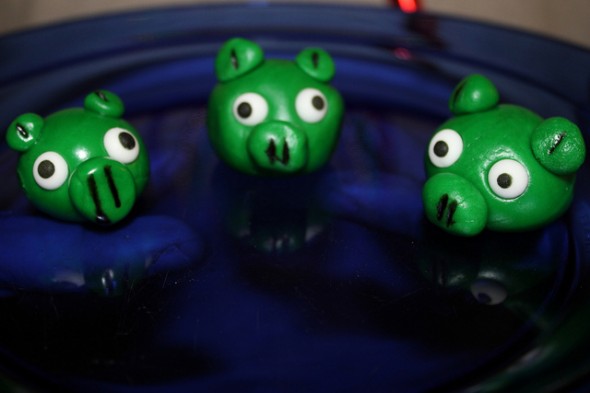
You bet your ass there is!
Bad bacon (think Evil Doctor Porkchop): heavily processed, from factory-farmed pigs, full of artificial ingredients and preservatives. This is the type of bacon we want to avoid. Fortunately, many types of bacon have already removed a lot of this stuff by law (pigs have to be raised without hormones). So don’t pay extra just because a label says “Hormone free!”
Better bacon: unprocessed, with just a few ingredients. Think “pork, water, salt, brown sugar” and not much else.
Best bacon: unprocessed, preferably cured with natural ingredients, from pasture-raised/humanely raised pigs, void of artificial ingredients and preservatives. More expensive (if you’re buying it), but worth every penny. Now, the labels advertising “no nitrates added” isn’t necessarily true, and as we’ll explain shortly, paying extra for this isn’t quite worth it either!
Epic bacon: bacon that you cure yourself! If you’re up for it, Robb Wolf has put together a fantastic resource on purchasing pasture-raised pork belly and curing it at home. Sure, more work, but I guarantee it’ll be the best bacon you’ve ever tasted.
How do I find the good bacon? Check the ingredients! “Good bacon” will list something like “pork, water, sea salt, brown sugar” for ingredients and not much else. The more ingredients there are beyond that, the more processed it’ll tend to be. If there are any ingredients you can’t pronounce, you’ll want to be cautious about buying it!
Another caveat: “uncured bacon” isn’t technically real. If it was uncured, you’d have to cure it yourself; the curing is what magically turns the pork belly into bacon, so “uncured” is a fallacy to make you think it’s healthier for you.
If you’re looking for quality locally sourced bacon, check out Eat Wild and Local Harvest to find quality local pig and bacon sources in your area.
DEFINITIVE ANSWER: Do the best you can. If you can find a local source for bacon, go for it. If you are buying in a store, pick one that has the least amount of ingredients on the back, and pick a package which contains ingredients you actually recognize. Don’t fall victim to the “no nitrates and nitrites added,” “uncured,” and “hormone-free” fallacies. All pigs in the US are required to be hormone free, there will be nitrates/nitrites in your bacon (from either natural or unnatural sources), and bacon isn’t bacon unless it’s cured!
What the heck are nitrates and nitrites?
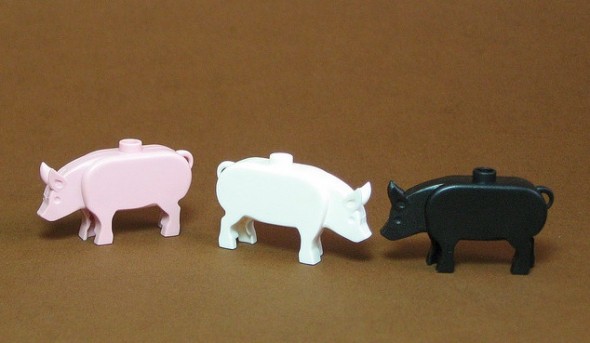
When the topic of bacon being healthy comes up, nitrates and nitrites are generally at the top of the list for discussion.
A lot of bacon these days comes allegedly “nitrate free”, though is it worth it? According to Mark’s Daily Apple:
We take in nitrates every day with our vegetables and, to a much smaller degree, with cured meats. Microorganisms in food and in our own digestive tracts convert some nitrates into nitrites, and some of these nitrites can then form nitrosamines, known carcinogens.
Vegetables have sufficient antioxidant power that this small amount of conversion is inconsequential. As far as cured meats go, they generally only make up about a 10th of our nitrate intake, and a serving of vegetables or vitamins C and E can further inhibit the unwanted conversion (hence the orange juice recommendation some people follow with their bacon).
So, yes vegetables contain lots of nitrates. In our system, some of those nitrates get converted to nitrites. However, vegetables ALSO contain anti-oxidants that can help counteract these nitrites and the formation of nitrosamines, nasty stuff that has been linked to various types of cancer. When you heat up various types of meat, especially at high temperatures, it can result in the formation of nitrosamines.
While some packages may say otherwise, you can’t really get bacon without any nitrates or nitrites; when a package says “no nitrates added,” they simply mean they’re using celery instead of sodium nitrite in the curing process (which contains a BOATLOAD of nitrates!).
It’s kind of like seeing a tub of ice cream that says “no sugar added,” even though it already has a 30 grams in a single serving. Don’t fall for the hype.
And just for fun, if you were worried about eating too many nitrites at all once, it would take a LOT to kill you:
To obtain 22 milligrams of sodium nitrite per kilogram of body weight (a lethal dose), a 154-pound adult would have to consume, at once, 18.57 pounds of cured meat product containing 200 ppm sodium nitrite. Even if a person could eat that amount of cured meat, salt, not nitrite, probably would be the toxic factor.
With all this said, it might be that this whole nitrates and nitrites scare is hogwash, and that they might even be beneficial. Ultimately, I’ll leave that up to you to decide.
Here’s more than you ever wanted to know about nitrates and nitrites.
Can I eat too much bacon?

You might not want to pull a Ron Swanson and eat ALL THE EGGS AND BACON every day, but a moderate amount of bacon (a few strips) on a daily basis (should the bacon be the GOOD kind of bacon) is more than okay.
The issue with TOO much bacon comes from the curing process – bacon can be very high in sodium. If you are already following a Paleo lifestyle , you’ve probably already cut out a significant amount of sodium. However, if you are overweight, still eating poorly, and eating six pounds of bacon a day, you’re probably gonna have a bad time.
On top of that, if you’re eating heavily processed bacon instead of the good kind of bacon, you’re adding more harmful chemicals and preservatives to your system. Not cool.
Last but not least, you’ll have to decide how important the nitrate/nitrite stuff is to you, and which side you fall on: are they harmful or helpful?
Yes, you can find studies that say bacon is bad for you (I would argue that correlation does not prove causation), but you can honestly find a study to say pretty much whatever you want these days. Like this: Bacon saves lives!
“BUT STEVE, IS BACON PALEO!!?!”
Technically, bacon isn’t Paleo due to the brown sugar used in the curing process. HOWEVER, every Paleo website on the planet still recommends bacon despite this, as you can do a LOT worse than eating a few slices of bacon: it comes from a pig, it can be cured using ingredients found in nature, and it’s delicious. So, if you are living a Paleo lifestyle, bacon is kind of in the grey area. If you want to go for it, eat it and don’t feel guilty about staying true to Paleo.
What about eggs and bacon for breakfast every day? My buddy Brett from Art of Manliness spent three months in a testosterone-boosting experiment, eating “artery-clogging” bacon and “cholesterol loaded” eggs for breakfast every day. Fortunately, he was aware that dietary cholesterol and cholesterol produced in the body aren’t as connected as one might think, and that fat can be GOOD for you, so he followed through with his experiment. Sure enough, after three months, his blood tests came back with fantastic results.
DEFINITIVE ANSWER: If you enjoy bacon, eat it! Enjoy bacon in moderation and all is right in the world. I plan on continuing to eat it. If you’re worried about sodium content, just keep an eye on how much you eat.
If you’re worried about your cholesterol or fat intake, for self-experimentation purposes, go ahead and get blood work done. Then spend a few months eating bacon and eggs for breakfast (keeping everything else the same), and get your blood tested again. I bet you’ll be surprised
Cooking bacon on the stove
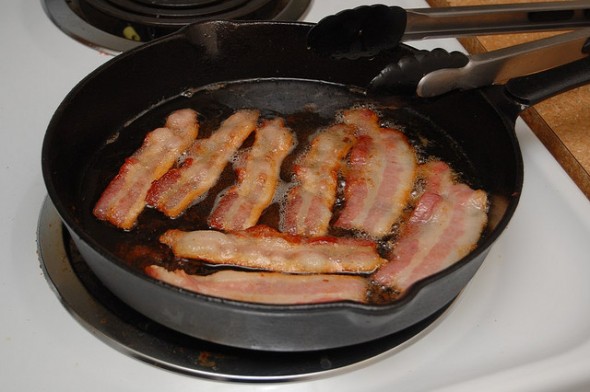
Are you’re a bacon newbie? Sure you’ve eaten it, but have you thus far avoided the kitchen?
You’re in luck. No joke, bacon might be the easiest thing in the entire world to cook:
- Fire up a skillet/pan on the stove top (this is the pan I currently use and love) at low heat. Let the pan warm up a bit before adding your bacon.
- Add your strips of bacon next to each other. I can generally fit four or five slices of bacon into the pan at once. They’ll start sizzling, and start to “shrink” a bit as they cook. After a few minutes (about 5 min if you’re cooking on medium or 10 minutes if you’re cooking on low), go ahead and use a fork or some tongs (I use these) and flip the strips of bacon over.
- Monitor the bacon for a few minutes until your it’s your desired level of floppiness or crispness
- When it’s ready, turn off the heat and remove the bacon a strip at a time. You’ll want to place it onto a plate with a paper towel on it. The bacon is most likely covered in grease, so you’ll want to blot it with paper towels on both sides.
- Start eating. MMMMMMM.
Here’s a good video that breaks down the whole process into a quick two minutes…if you are still completely lost: How to cook bacon properly
“WHAT AM I SUPPOSED TO DO WITH THE FAT AFTER?” After removing your bacon from the pan, you probably have a skillet full of liquid bacon grease. DO NOT DUMP THIS DOWN YOUR DRAIN. When the grease cools, it will solidify, and can cause all sorts of issues with your plumbing.
Instead, you have a few choices:
- Empty the grease into a coffee-ground container or glass jar (I use an old almond butter jar) and keep it in the fridge. Do NOT use a plastic jar or plastic container…the hot grease could melt right through it.
- You could also let the bacon grease congeal (cool), and then scrape the grease out into the garbage. I’ve found this to create unnecessary extra work. Booo unnecessary work.
Now, a lot of people re-use the bacon grease to cook with, and I’ve found other breakfast/lunch items prepared in bacon grease can be effin’ amazing.
Cooking bacon in the oven or microwave
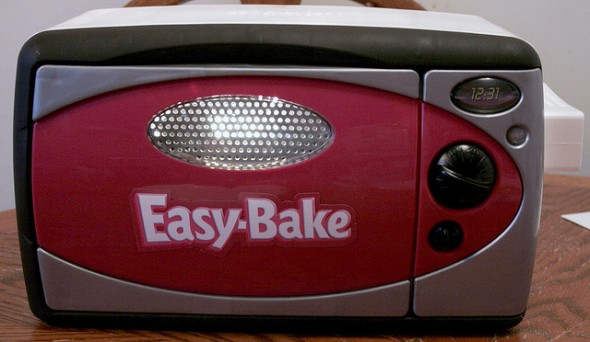
Personally, I believe bacon is best cooked on the stove top, but you have a few other alternatives:
In the Oven:
- Preheat your Easy Bake Oven to 400 degrees. Totally kidding. Use a normal oven.
- Place a rack on a cookie tray and then drape your bacon across the rack.
- Let it bake for 10-15 minutes, taking it out when it’s at your desired level of crispness.
- Remove and enjoy. Boom.
In the microwave:
- Put paper towels on a microwave-safe plate.
- Lay the strips of bacon on the paper towel.
- Place another paper towel on top of the bacon
- Cook the bacon for 30 seconds to 90 seconds per slice. Depending on your microwave, you’ll probably need to tinker with time.
- Remove the plate with a potholder. Eat the bacon and throw away the paper towels!
If you want to get even MORE creative, this epic bacon resource has all sorts of bacon contraptions that you can use to cook your bacon…though I think bacon cooked in the pan is the best.
Making the most of your bacon
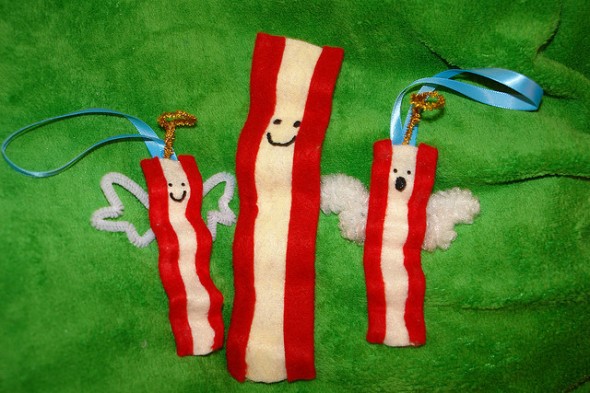
How long does bacon last? Great question! Happy bacon is still edible bacon.
Make sure you don’t let good bacon go bad, and make sure you don’t throw away good bacon!
One of my FAVORITE resources on the internet, Still Tasty, breaks it down quite easily:
- Unopened commercially sealed bacon package: Check the “best if used by” date on the package. You can eat that bacon for up to one week AFTER the “best if used by” date.
- However, once you OPEN that sealed bacon package, the clock starts ticking: You have approximately 7-10 days to eat the bacon. After eating some of the bacon, wrap the rest of the bacon in plastic, or place the bacon in a plastic bag and remove all the air before returning it to the fridge.
- If you have a lot of bacon that’s about to expire, go ahead and freeze it (which will then stay good for 1-2 months), wrapping it tightly in heavy aluminum foil or in freezer bags. You can also cook your bacon and then refrigerate it within two hours, which will buy you another 3-4 days.
When in doubt (if it looks or smells off) throw it out. No need to make yourself sick from eating expired bacon. Just be more careful next time and less wasteful. You don’t want to be that Rebel that let bacon go bad!
What are some great bacon recipes?
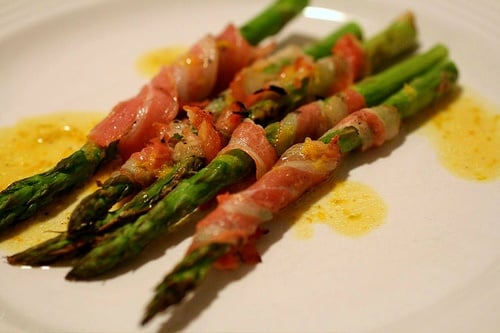
Okay, so you’ve decided that you want to add some bacon into your life.
Wise choice, my friend.
I wanted to share with you some of Team Nerd Fitness’s favorite healthy bacon recipes, along with favorite recipes from Nerd Fitness Rebel Community:
Bacon wrapped asparagus (pictured above) – simply wrap your bacon around spears of asparagus (my favorite veggie!), stick on a slotted broiler pan, and cook in the over for 12 minutes at 400 degrees.
Bacon and Shrimp Kebabs – Bacon is great. Shrimp is great. Bacon and Shrimp, skewered and grilled? Heaven.
Broccoli and bacon salad – Broccoli is great for you and bacon is nature’s candy. Sounds like a fantastic salad to me!
Bacon Bowls – Forget unhealthy taco salad bowls…make a bacon bowl for your salad! MMMMMMMMM.
Spiced Bacon Twists – Great for a party appetizer, even if it’s a fancy party. Who would turn down bacon!?
Kale and Bacon Stirfry – Kale is one of the healthiest superfoods out there, why not fry it up with some bacon and make life a little bit better?
Bacon explosion – I’m not quite sure how healthy this is for you, but we had to include it either way. It’s like watching a master craftsman, of meat and bacon, create a masterpiece. God bless the internet.
On top of that, we just started a thread on the Nerd Fitness Message Boards asking for people’s favorite bacon recipes.
Feel free to add your own!
What else do you want to know about Bacon?
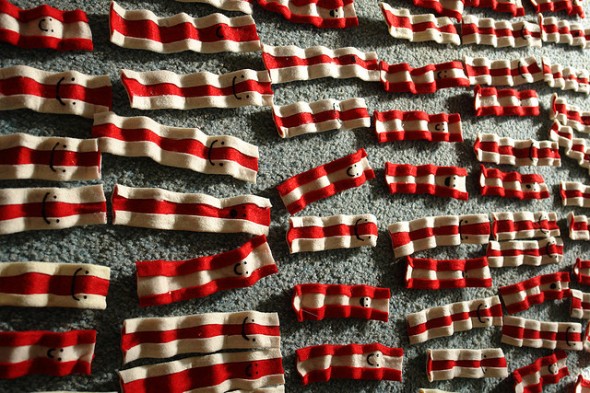
Did you know..
- There is bacon vodka, bacon toilet paper, and bacon beer.
- You can Google any actor and add “kevin bacon number” to it and it will tell you their degrees of separation.
- Sir Francis Bacon was a famous 16th-and 17th-century English author, philosopher, and scientist.
- Edmund Bacon was known as the father of modern Philadelphia.
There must be something special about “bacon.”
What else would you like to know about bacon?
Do you have any favorite bacon recipes?
Let me know!!
-Steve
###
photo sources: flying pig, storm trooper pig, bacon and tofu, angry birds pig, cartoon bacon, lego pigs, ron swanson, stove top bacon, easy bake oven, more cartoon bacon


